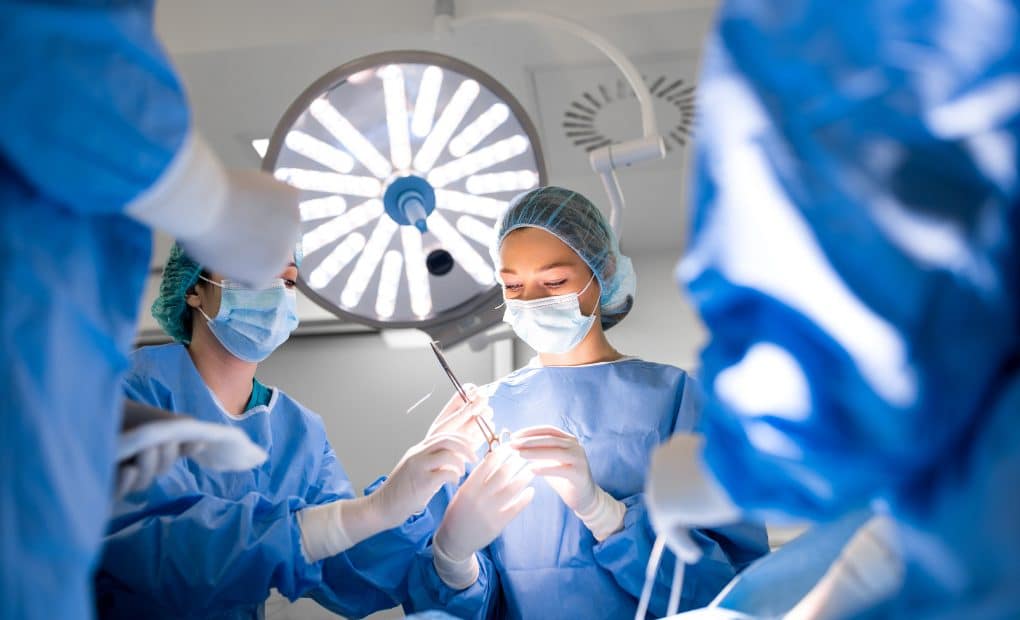
The process of medical negligence cases
Referral
In the case of suspected medical negligence, initial contact is made with an Expert via email or telephone to the Expert’s office. This contact is to canvass whether the Expert would be able to consider a certain body region or incident management for assessment.
The next stage would be a timely reply by the Expert and at some point, a response with some background information of the case, such as the Plaintiff and Defendant identification and advice as to whether there might be some conflict of interest.
Review and quotation
The Expert conducts a review of a summary (or brief) of the matter to determine if there has been any significant departure from accepted medical practice.
At this point, a written quotation for costs for the Expert would be appropriate, based on the Expert’s hourly rate. In general terms, there is usually a minimum rate of 4 hours and a maximum rate of say, 10 hours. Costs can be estimated by the size of the file. For example, it takes approximately 1 hour to review 100 pages of medical notes, so a 1000-page file would be estimated at 10 hours of work.
Generally, a hard copy file is preferred because it can be more readily accessed and easily studied than an electronic file. If an electronic file is provided, it can take about 10% longer and the referrer is advised accordingly. Another time-saving measure is for the essential referral documents to be placed at the beginning of the brief and not at the very end (which often happens). When there are supplementary reports to be provided, the hard copy document allows more ready access for further information.
If the quotation is accepted the Expert can start reviewing the full file.
File appraisal
After reading the file it would be appropriate for the Expert to make contact with the referrer by telephone to give an appraisal on the main issues on which the matter hinges. The referrer should expect to hear all the strength or weakness of the case from the Expert. This might take about half an hour (which is chargeable) and the referrer will then usually take advice from the Plaintiff or the Insurer as to whether to proceed with the referral and acceptance of the quotation. Thereafter the report writing will take place. If it becomes evident that the quotation for time is going to be exceeded, then the Expert will advise the referrer.
Report writing
The essential elements when writing a report are to be fair to both sides. That means relying on the facts of the case and not being biased by the referral process in favour of one side or the other. The phrase Amicus curiae (“friend of the Court”) is appropriate to consider.
Original documents are preferred rather than ‘cut and paste’ inserts into assumptions within the letter of instruction, however the ‘cut and paste’ can be very helpful in guiding the Expert to the relevant original documents.
Important clinical evidence can often be missing from the brief. This often includes histopathology reports from the hospital at which the Plaintiff has been treated. The discovery of these documents is essential for the Expert and often a case will turn on the factual information contained in the histopathology file. If the expert has to chase these documents, then that may involve an additional cost to the referrer, so it is important to make sure that all the critical documents are in the file.
Causes of medical negligence litigation in general surgery
Lack of informed consent
While the consent document varies from hospital to hospital, it basically identifies the procedure and the correct side and the date on which the consent was obtained. This would usually be obtained by the operating Surgeon in their rooms and confirmed in the anaesthetic bay prior to any premedication injections by the Anaesthetist.
Occasionally, consent will be obtained by an Assistant Surgeon or by a Surgical Registrar in an in-hospital situation. Such a consent form should not contain any crossing out or abbreviations. Instead, it should be a clean copy stating the procedure and be signed by the patient and further witnessed by the Surgeon.
Because complications of surgery cannot be entirely eliminated, there is an onus placed upon the Surgeon to carefully, patiently and skilfully communicate with the patient. In turn, the patient needs to develop an understanding of both the risks and benefits of the proposed procedure. This should be in addition to the preoperative wide-ranging question and answer session by the patient, and any follow up emails should be promptly responded to by the operating Surgeon.
Extremely rare errors such as operating on the wrong side or the wrong body part can be avoided by implementation of the Time Out Process, where everyone in theatre pauses and checks patient identity, date of birth, hospital number, consent form, allergic status and preoperative markings. The Surgeon, Scrub Nurse, Anaesthetist and Assistant Surgeon all are present for this Time Out Process.
Inadequate training and education
A common cause of medical misadventure in general surgery in regards to hernia repair is inadequate training and education for Surgeons. A lack of specific experience or knowledge of a new procedure can lead to operating to a standard that at the time was below the accepted standard of the body of one’s peers. For example, a laparoscopic hernia repair should not be undertaken without specific training and it is generally considered that a laparoscopic hernia Surgeon should be mentored for about the first 50 cases due to the risks of damage to many vital structures.
Mesh inguinodynia (chronic groin pain after a mesh hernia repair)
In spite of appropriate training and experience, laparoscopic mesh placement for hernia repair has been complicated by post-operative chronic groin pain which has reached substantial proportions. The incidence of chronic groin pain after mesh hernia repair has been estimated at 15% at 12 months.
It is not usually the fault of the operating Surgeon but a problem of the mesh itself, and product liability has to be considered (as has frequently been found when mesh was applied to some other body parts). When mesh comes in contact with peripheral nerves it can incite a painful reaction. There are multiple cases in the legal literature of Surgeons and institutions being sued, but it is seldom the fault of the operating Surgeon.
Very early recurrence of inguinal hernia can be a technical fault and should be rectified early by the Surgeon. Immediate chronic groin pain (within 1 week) should also be investigated early by the operating Surgeon and diagnosed and treated appropriately or referred to another Surgeon with experience in managing this complication. If such steps are taken early while there is still good open communication between the Surgeon and the patient, litigation may in all likelihood be avoided.
Preventative measures
To reduce the risk of medical negligence, Surgeons should engage in continuous professional development by regular training workshops, staying up-to-date with the latest surgical techniques and guidelines. The Assistant Surgeon should also be a qualified Surgeon or have similar experience.
Peer review audit of the Surgeons cases with a colleague on a regular basis is also desirable. If things do go wrong, an appropriate debriefing between the Surgeon, Assistant and Anaesthetist should take place.
Conclusion
Medical malpractice in general surgery is extremely uncommon, but is an issue that can have consequences for patients, healthcare professionals and hospitals. Understanding the causes and consequences of medical negligence is crucial for preventing surgical errors.
By emphasising effective regular communication with the patient and quality assurance programs, the healthcare community can work together to reduce the incidence of medical malpractice and ensure that patients continue to receive the highest standard of care. Ultimately, it is a collective responsibility of all to uphold the principles of medical ethics and patient safety in the field of general surgery.
Author:
Dr John F.W. Garvey
General & Diagnostic Surgeon Herniologist
BSc(Med) MBBS(NSW) D.Phil(Oxon) FACS FRACS
Certified Independent Medical Examiner (ABIME)
For further information on advicor’s tailored process, click here.
